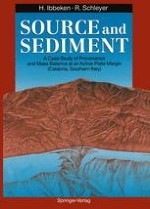Deciphering provenance - this is the study of how far geology, geomorphology and climate of a source, a mountainous area, may be reconstructable from its erosional products released to the sea; from gravel and sand, from silt, sand, clay which recombine to form a new cycle of rocks. The purpose of this book is to give a quantitative picture of both source and sediment and the masses involved in the flux of material; based on a modern case study in Calabria, southern Italy, a mountain range which is part of an active plate margin. High erosion rates in the past (200mm/ka), and dramatic ones at present (1500mm/ka), make the area a powerful source of sediment comparable to orogenic conditions of the geological past. The book presents the first systematic, quantitative and data-bank supported study - here a larger source with small rivers and their sedimentary products - of the complex topic of provenance of terrigenous sediments and related mass balances at an active plate margin. It may serve as an orientation for corresponding research in other plate tectonic realms.
